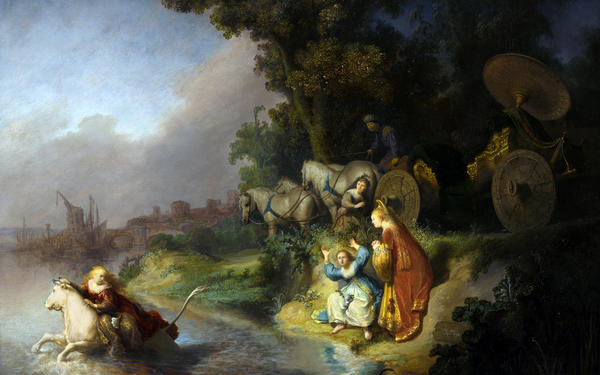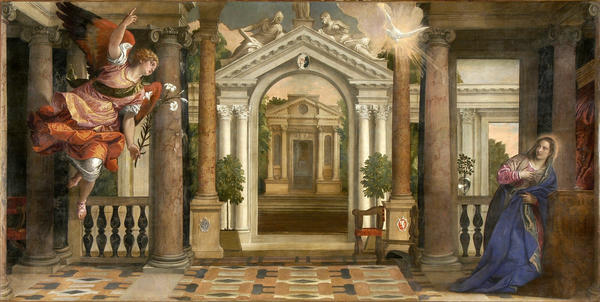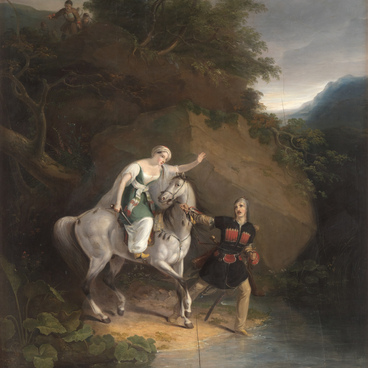The Abduction of Europa is one of the most popular subjects in the history of European art. At different times many artists including Titian, Veronese, Rubens and Rembrandt returned to it. It originates from Greek mythology. According to the legend, Europa, daughter of the Phoenician king Agenor, was so beautiful that even Zeus the Thunderer could not resist. He turned into a bull and kidnapped Europa while she was having a walk with her friends on the seashore and married her. From then on Europa lived on Crete and gave birth to three sons. She was the ancestor of the European civilization.
The Abduction of Europa. A Copy from Paolo Vero
Creation period
18th century
Dimensions
175x230 cm
175х230 сm
175х230 сm
Technique
Canvas, oil
Collection
Exhibition
1
Open in app#1
Unknown Author
The Abduction of Europa. A Copy from Paolo Vero
#2
#10
Rembrandt. The Abduction of Europa. 1632. Source: Getty Museum
#5
P.S. Gamzatova Dagestan Museum of Fine Arts displays a copy from the work of Paolo Veronese (1528–1588) — one of the best representatives of the Venetian school. His artistic paintings were characterized by vibrant colors and casual interpretation of Gospel subjects: he often pictured Biblical characters in 16th century Venetian interiors thus connecting eternal and modern. Veronese remained in history as a chronicler of Venetian life at the times of economic and cultural prosperity as well as a master of monumental and decorative painting. He also painted decorative panels in the Doge’s Palace (Venice), pictures in the San Marco library (Venice) and numerous other similar works.
#7
Veronese. The Annunciation. 1578. Source: Gallerie dell’Accademia (Venice)
The original of ‘The Abduction of Europa’ (1578) painting is exhibited in the Ducal Palace in Venice. Veronese depicted Europa seconds before the bull carried her away from her home. He shows the tensity of the moment with an unusual composition. A group of main characters is shown in the left part of the painting. Europa’s friends help her to get on the bull’s back unsuspicious of what will happen next. However, the observer already sees the sea where Zeus will run with his beloved.
#8
The unknown artist who made this copy preserved the complex compositional arrangement. Composition wise the canvas is divided into two parts: two successive scenes. The main action takes place in the left part of the canvas. That is where we see Europa sit down on the back of a mighty white bull assisted by her friends. And then, a moment later, the bull with Europa enters the sea to take his beloved to the island of Crete — that is the scene in the right part of the composition.
#11
Veronese. The Feast in the House of Levi. 1573. Source: Gallerie dell’Accademia (Venice)
#12
In The Abduction of Europa Veronese almost completely follows the classical subject matter. The fact is that five years earlier the artist’s free attitude to the Bible’s characters led to the inquisition’s anger. He had to slightly change the subject of the painting The Feast in the House of Levi and rename it (initially it was titled Last Supper).
#13
P.S. Gamzatova Dagestan Museum of Fine Arts
read morehide
00:00
00:00
1x
The Abduction of Europa. A Copy from Paolo Vero
Creation period
18th century
Dimensions
175x230 cm
175х230 сm
175х230 сm
Technique
Canvas, oil
Collection
Exhibition
1
Open in app
Share





